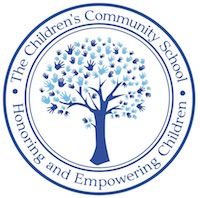Hello Magnolia families,
This week, we are focusing on continuing activism conversations, preparing for the end of the school year, and engaging in different types of learning through sensory water play!
Activism: Talking about children activists.
Not only can children learn about big topics, they can also enact change in their worlds. While giving children opportunities to do this, you can also learn and think together about other young people who have made a difference.
-
Sophie Cruz, 6 years old, talking about “making a chain of love to protect our families” when talking about immigration and deportation at the Women’s March on Washington. She speaks in both English and Spanish.
-
Ask your child, “If you were talking in front of a big group of people, what would you like to say to them? What do you think is something it is important for everyone to know and hear?”
-
-
Living Room Protests: Zuri and her Mama make videos talking about things they think are important for people to know. Here is one about consent: No Means No!
-
Ask your child if they want to make a video of their own living room protest! What would they say in theirs? Do any of their toys or stuffed animals want to make a living room protest? What might they want to say?
-
Getting ready for the end of school: Creating a memory book. This is a way you can help your child process the end of the school year. If your child is excited about the process of making a book, here are some bookmaking techniques you could try together.
-
Ask your child, “What do you remember doing in the Magnolia class this year?” and “What do you remember doing when we were doing school-at-home?”
-
Record their answers as a list or as separate pages of a book.
-
After writing your book, you can go through the book and notice what will be the same and different. “You said you liked reading books on Zoom. When school ends, there won’t be Zoom calls every week anymore, but we can still read books and watch videos of your teachers reading books from before.”
Sensory learning: Playing in the sink (or outside in a bin full of water). Now is a great time for water play, both in and out of the house. Here are some ideas for doing some sensory activities in the kitchen sink, which incorporate math, science, and literacy, as well!
Color mixing with ice cubes: In an ice cube trays, make colorful ice cubes by mixing water with food coloring. Once frozen, fill up and the sink and let your child put in different combinations of colored ice cubes. Have them make predictions about what will happen to the water once they put in certain combinations.
Measuring tools: Fill up the sink and let children explore with measuring tools — cup measurers, teaspoons, tablespoons, and containers. You can also encourage them to count how many tablespoons of water it would take to fill up a ¼ cup, etc. (Developing mathematical thinking skills!)
Float or Sink: Collect a variety of objects to do a “float or sink” test with from around your house or when you’re out on a walk. Then, fill up the sink with water, make predictions, and then test those predictions by dropping the objects in the water. Make a chart with a column for writing the objects, a column for the prediction, and one to record the results. (Developing scientific thinking and literacy skills.)
Warmly,
